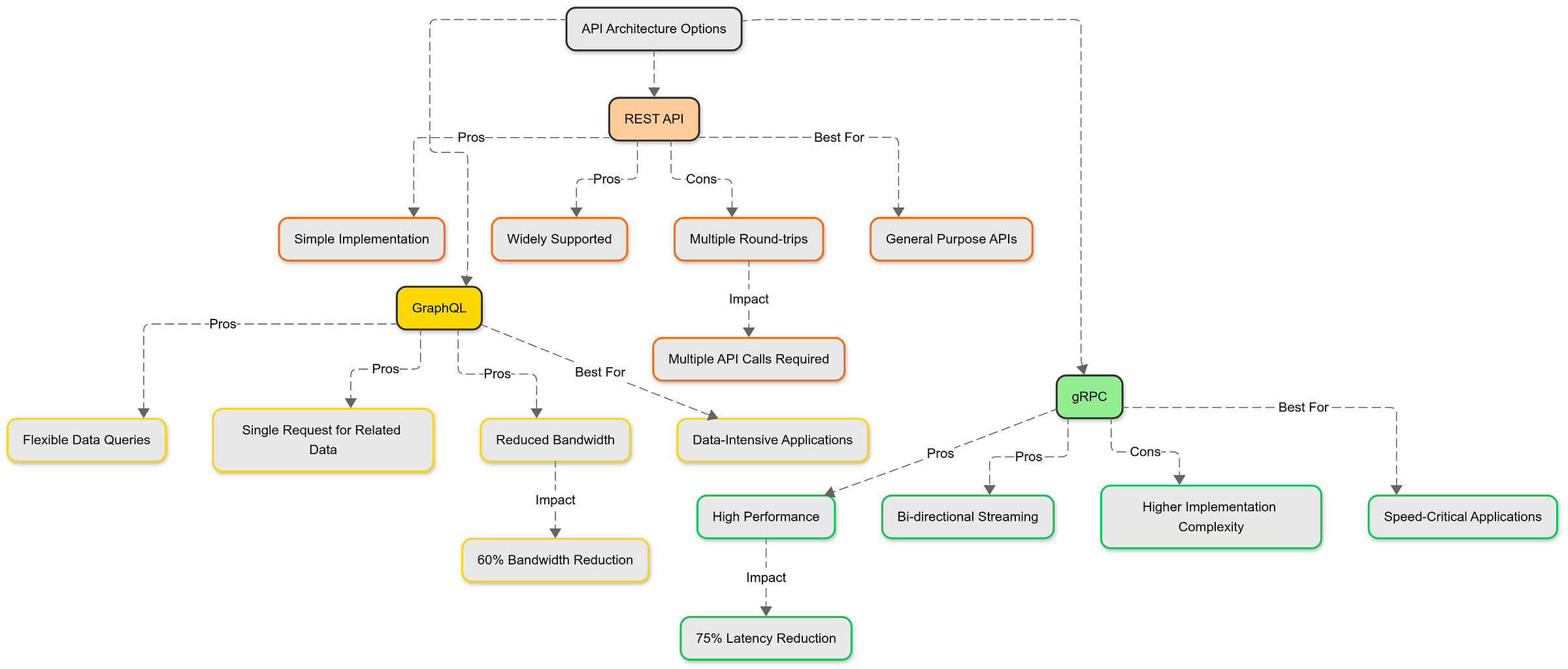Here is How To Design APIs That Make Your AI Agents Actually Useful
Building AI agents that work in the real world? Your API design matters. Here is how to create self-discoverable, stateless, and efficient APIs that help your AI connect with data and services.
Building an AI agent is just the first step. To make your AI truly useful, it needs to connect with data, services, and systems through well-designed APIs.
Many companies build impressive AI models only to watch them fail when trying to interact with real-world systems. The missing piece? Thoughtful API design that considers how AI agents actually work.
Why API Design Matters for AI Agents
Unlike humans, AI agents interact with APIs in unique ways:
They make many more requests (often thousands per minute)
They require extremely structured data
They need clear feedback on errors
They might work across multiple services at once
A poorly designed API can cripple even the most sophisticated AI agent.
Core Principles for AI-Friendly APIs
1. Make Your API Self-Discoverable
AI agents need to understand what your API can do without human help. This means:
Provide clear, machine-readable documentation with OpenAPI/Swagger
Include a discovery endpoint that reveals available capabilities
Use consistent naming patterns across endpoints
Return helpful metadata with responses
For example, rather than just returning data, include information about what actions can be taken next:
{
"data": {...},
"available_actions": [
{"name": "update", "endpoint": "/api/resource/{id}/update"},
{"name": "delete", "endpoint": "/api/resource/{id}/delete"}
]
}
This helps AI agents navigate your API without guesswork.
2. Design for Statelessness But Enable Context
AI agents often maintain context across multiple interactions. Your API should:
Keep endpoints stateless for scalability
Accept optional context parameters when needed
Provide ways to maintain session state without overloading the API
Most successful AI-friendly APIs use a token or session ID that lets the agent tie requests together without forcing the API to maintain all the state.
3. Optimize for Speed and Efficiency
AI agents are hungry for data but sensitive to latency.
Balance these needs by:
Supporting batched operations for multiple items
Using pagination for large datasets
Implementing field selection so agents only get what they need
Caching frequently requested data
These techniques can dramatically improve performance when an agent makes hundreds of API calls.
Choosing the Right API Architecture for AI
Each API style has strengths and weaknesses for AI integration:
REST: Simple but Sometimes Verbose
REST APIs are widely supported and easy to implement, making them a solid default choice. However, they can require multiple round-trips for complex data needs.
Best for: General-purpose APIs, especially when human developers also need to use them.
Limitations: Can be "chatty" when agents need related data from multiple endpoints.
GraphQL: Flexible and Efficient
GraphQL shines for AI agents that need to gather complex, interconnected data. It lets agents specify exactly what fields they need in a single request.
Best for: Data-intensive applications where agents need to pull information from multiple related resources.
Real impact: One AI project reduced API bandwidth by 60% by switching from REST to GraphQL, as the agent could request only necessary fields.
gRPC: High Performance with Streaming
For speed-critical applications, gRPC offers significantly faster communication through binary protocols and HTTP/2.
Best for: High-frequency trading bots, real-time analytics, or any AI that needs streaming data.
Performance note: In testing, gRPC APIs reduced latency by up to 75% compared to REST for AI model inference requests.
Solving Common AI-API Challenges
Challenge: Handling Large Data Transfers
AI agents often need to process big files or datasets that would choke a standard API call.
Solution: Use signed URLs or presigned uploads
Instead of pushing large files through your API:
The agent requests an upload URL from your API
Your API returns a temporary, secure URL
The agent uploads the file directly to storage
The agent tells your API the file is ready for processing
This pattern works for everything from image recognition to document processing.
Challenge: Multi-Step Processes
AI agents frequently need to coordinate several API calls to complete a task.
Solution: Create composite endpoints for common workflows
If you notice agents always calling endpoints A → B → C in sequence, consider adding an endpoint that performs all three operations server-side. This reduces network overhead and simplifies agent logic.
Challenge: Real-Time Updates
Polling for changes is inefficient and slow for agents that need to react quickly.
Solution: Implement WebSockets or Server-Sent Events (SSE)
These technologies let your API push updates to the agent as they happen, rather than making the agent constantly check for changes. This is critical for:
Trading agents monitoring market data
Support bots waiting for new messages
Monitoring agents watching for anomalies
Security Considerations for AI Agents
AI agents introduce unique security challenges:
1. Define Clear Permission Boundaries
Create specific roles and scopes for different types of AI agents:
Read-only agents shouldn't have write permissions
Customer-facing agents need stricter limits than internal ones
Consider creating dedicated API keys for each agent type
2. Implement Smart Rate Limiting
Standard rate limits often don't work well for AI:
Set limits based on patterns, not just request counts
Different endpoints may need different thresholds
Consider tiered access based on agent behavior
One company found that setting different rate limits for "browse" vs "transact" endpoints prevented their AI shopping assistant from overwhelming their system.
3. Monitor for Unusual Patterns
AI agents can go rogue due to bugs or bad inputs:
Track typical usage patterns
Set up alerts for sudden changes in behavior
Implement circuit breakers for critical systems
This helps prevent scenarios where an agent gets stuck in a loop making thousands of unnecessary API calls.
Tools That Help Build AI-Ready APIs
Several frameworks and tools make building AI-friendly APIs easier:
FastAPI (Python): Designed for high performance with automatic OpenAPI docs
Kong API Gateway: Handles authentication, rate limiting, and can provide AI-specific rules
Apollo GraphQL: Simplifies building flexible, efficient GraphQL APIs
gRPC: For building high-performance streaming APIs




